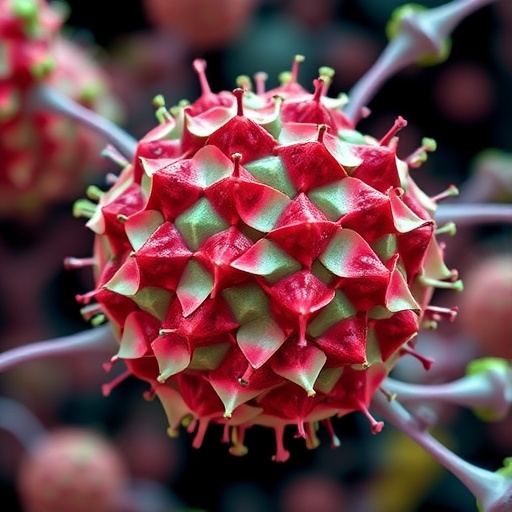A groundbreaking national quality improvement initiative led by the American College of Surgeons (ACS) has shed new light on the persistent problem of missed radiation therapy appointments among cancer patients and demonstrated promising strategies to mitigate this issue. Radiation therapy, a cornerstone of cancer treatment, requires patients to attend frequent daily sessions over several weeks, creating logistical and personal challenges that often result in missed appointments. These lapses in care are not trivial; they have been correlated with significantly worse clinical outcomes, including increased rates of cancer recurrence and mortality.
The ACS’s study involves an extensive dataset from over 90,000 cancer patients across multiple institutions accredited by the ACS Commission on Cancer (CoC) and the National Accreditation Program for Breast Centers (NAPBC). The two-year collaborative program, known as Breaking Barriers, was designed to identify, understand, and reduce the multiple factors contributing to poor radiation therapy adherence. This initiative is among the largest efforts worldwide to systematically address appointment non-compliance in cancer therapy through structured interventions at the hospital and patient levels.
Cancer therapy adherence is a complex, multifactorial issue affected by an interplay of socioeconomic, psychological, and systemic barriers. Breaking Barriers pinpointed four primary obstacles influencing patients’ abilities to maintain their radiation schedules: transportation difficulties, non-cancer-related illnesses, scheduling conflicts with other medical or personal appointments, and patients’ own decisions to discontinue treatment. Among these, transportation issues emerged as the predominant barrier, afflicting up to 62% of patients with missed appointments. This reflects systemic gaps in healthcare access infrastructure, particularly in regions lacking affordable public transit or where patients live at considerable distances from treatment centers.
Illnesses unrelated to cancer treatment, including mental health conditions such as depression and anxiety, accounted for a significant proportion of missed sessions, highlighting the importance of holistic patient care. Treatment adherence is not solely a physical challenge but often a psychological and emotional struggle for patients navigating a demanding therapeutic regimen. Additionally, competing appointments and sometimes patients’ reluctance to continue treatment underscore the necessity for personalized patient engagement and support systems.
An essential insight from the study was the realization that no universal solution effectively addresses all patient populations. The diversity of regional, socio-economic, and cancer-type-specific challenges demands tailored approaches. For instance, while the South and Midwest regions showed considerable improvements after interventions, the Northeast demonstrated less pronounced gains, potentially due to distinct local barriers. Similarly, certain cancer types such as gynecologic, gastrointestinal, and breast cancers displayed more substantial reductions in missed appointments, while prostate and lung cancers lagged, indicating differences in patient population dynamics and treatment regimens.
The Breaking Barriers program encouraged participating hospitals to apply a multifaceted strategy, on average implementing four distinct interventions to tackle the identified obstacles. Key measures included the enhancement of electronic health record systems to automate timely appointment reminders, refinement of clinical workflows to assist patients in securing affordable and reliable transportation, and the employment of patient navigators who proactively followed up with individuals at risk of missing appointments. These interventions collectively contributed to nearly a 40% reduction in missed radiation therapy appointments at the patient level and a 32% median reduction at the hospital level.
While the study reflects progress, it also underscores ongoing disparities, particularly within community hospitals, which often serve smaller patient populations and reported higher baseline no-show rates. These institutions only saw modest improvements, indicating that more bespoke support frameworks and resource allocation may be necessary to effectively combat barriers unique to these settings. The recognition of such institutional variances is crucial to improving equity in cancer care nationwide.
This extensive endeavor also illuminates the critical role of integrating patient-reported data into quality improvement programs. By directly involving patients in articulating the barriers they face, healthcare providers can develop interventions that target real-world challenges rather than relying solely on clinical assumptions. Moreover, the program’s longitudinal design allowed for monitoring changes over time and assessing the sustainability of interventions, offering a valuable model for future efforts aiming to enhance treatment adherence across various domains of oncology and beyond.
Importantly, the Breaking Barriers initiative not only addressed logistical and clinical aspects but also acknowledged the psychological dimensions influencing patient compliance. Depression, anxiety, and the emotional toll of cancer treatment demand integrated care models that encompass mental health support alongside physical therapy. The authors advocate for the expansion of such holistic frameworks to encompass other critical treatment modalities, including chemotherapy adherence, with the potential for substantial impact on overall cancer survival rates.
The study’s methodological rigor, involving prospective data collection and robust statistical analysis across a broad cohort of patients, strengthens its findings. Nonetheless, the authors note limitations, particularly the potential underreporting or oversimplification of the nuanced challenges patients experience. Future research is warranted to refine data capture methodologies and explore region-specific cultural, economic, and health system factors that influence treatment continuity.
In summary, Breaking Barriers is a pioneering effort demonstrating that structured, evidence-based quality improvement strategies can markedly reduce missed radiation therapy appointments among cancer patients. By addressing transportation, illness, scheduling conflicts, and patient motivation through targeted interventions, healthcare systems can improve treatment completion rates, thereby enhancing patient outcomes. This initiative sets a precedent for collaborative, patient-centered approaches to overcoming treatment adherence challenges in oncology and may catalyze similar programs globally.
The implications of this research extend beyond radiation therapy, suggesting a paradigm shift in how healthcare systems identify and tackle barriers to care. It underscores a multi-stakeholder responsibility that involves clinicians, administrators, policy makers, and patients themselves. With the healthcare landscape continuously evolving, such innovative quality improvement collaboratives serve as invaluable models for elevating cancer care standards and optimizing survival in this vulnerable population.
Subject of Research: People
Article Title: Results of an American College of Surgeons Prospective National Quality Improvement Collaborative to Successfully Overcome Barriers to Cancer Care Across the US
News Publication Date: 11-Nov-2025
Web References:
Journal of the American College of Surgeons article
American College of Surgeons Breaking Barriers program
References:
Chan K, Reilly E, Janczewski LM. Results of an American College of Surgeons Prospective National Quality Improvement Collaborative to Successfully Overcome Barriers to Cancer Care Across the US. Journal of the American College of Surgeons, 2025. DOI: 10.1097/XCS.0000000000001637
Keywords: Cancer treatments, Radiation therapy
Tags: American College of Surgeons initiativeappointment non-compliance in oncologyBreaking Barriers programcancer treatment adherencedata-driven healthcare solutionsfactors affecting cancer therapy compliancemissed radiation therapy appointmentsnational cancer quality initiativespatient-centered cancer carepsychological challenges in radiation therapyquality improvement in healthcaresocioeconomic barriers in cancer care





